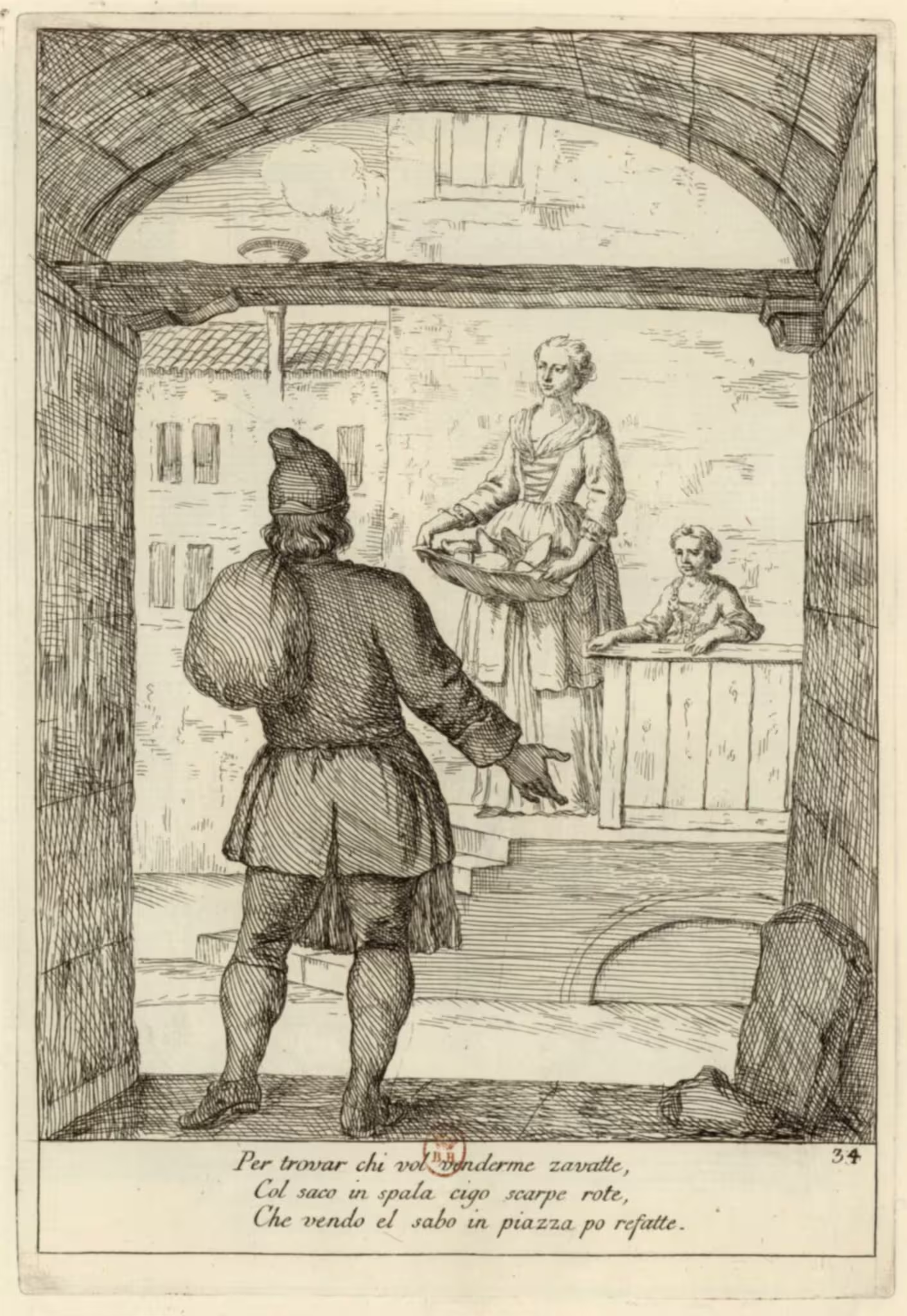Gaetano Zompini (engraver; 1700-1778)
Gaetano Zompini was a Venetian painter and engraver, best known for his collection of prints of common people in the mid-1700s, the Arti che vanno per via nella Città di Venezia.
-
Scoazer — rubbish collector — Zompini — Arti #4
“Scoazer” (rubbish collector) from “Arti che vanno per via” (1785) by Getano Zompini, translated by René Seindal.
-
Scoa Camin — chimney sweep — Zompini — Arti #1
“Scoa Camin” (chimney sweep) from “Arti che vanno per via” (1785) by Getano Zompini, translated by René Seindal.
-
Cura gattoli — drain cleaner — Zompini — Arti #38
“Cura gattoli” (drain cleaner) from “Arti che vanno per via” (1785) by Getano Zompini, translated by René Seindal.
-
Strazze Ferrut — collector of scrap iron — Zompini — Arti #30
“Strazze Ferrut” (collector of scrap iron) from “Arti che vanno per via” (1785) by Getano Zompini, translated by René Seindal.
-
Revendigola — collector and reseller of used clothing — Zompini — Arti #39
“Revendigola” (collector and reseller of used clothing) from “Arti che vanno per via” (1785) by Getano Zompini, translated by René Seindal.
-
Veri rotti — street vendor of glassware and collector of broken glass — Zompini — Arti #51
“Veri rotti” (street vendor of glassware and collector of broken glass) from “Arti che vanno per via” (1785) by Getano Zompini, translated by René Seindal.
-
Scarperut — reseller of used footwear — Zompini — Arti #34
“Scarperut” (reseller of used footwear) from “Arti che vanno per via” (1785) by Getano Zompini, translated by René Seindal.
-
Impizza Ferali — lamplighter — Zompini — Arti #41
“Impizza Ferali” (lamplighter) from “Arti che vanno per via” (1785) by Getano Zompini, translated by René Seindal.
-
Codega — lantern bearer — Zompini — Arti #7
“Codega” (Lantern bearer) from “Arti che vanno per via” (1785) by Getano Zompini, translated by René Seindal.
-
Cazze , e Sculieri — seller of wooden kitchen utensils — Zompini — Arti #40
“Cazz , e Sculieri” (seller of wooden kitchen utensils) from “Arti che vanno per via” (1785) by Getano Zompini, translated by René Seindal.










